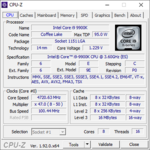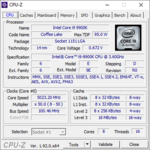let me chime in - excellent article, tremendous amount of work and hours has been put there ! Thank you very much.
One note : AMD results would be BETTER with faster memory as that would clock Infinity Fabric higher. 3200MHz is really just basement for anyone these days ; 3600MHz is much better and almost all 3900x CPUs can run 3800MHz RAM with 1:1 Infinity Fabric meaning it would be clocked 1900 real MHz.
Also, memory timings play huge role in GAMING performance on AMD platform. 3600MHz/CL18 (with relaxed secondary and tertiary settings) easily has 5% less REAL fps than tuned 3600MHz/CL15 or CL16, not even mentioning high-end kits with 3600/CL14 timings.
Nothing has been said about BIOS settings for each platform, both Intel and AMD can EASILY gain 5-8 fps everywhere except highest 3840x2160 resolutions just by optimizing CPU config in motherboards' BIOSes.
My guess would be that 5700XT and higher-end graphic cards can GAIN additional 5-10 fps in every resolution except 4K 3840x2160 especially on AMD platform.
Once again, hefty amount of work put to this article, thank you very very much !



